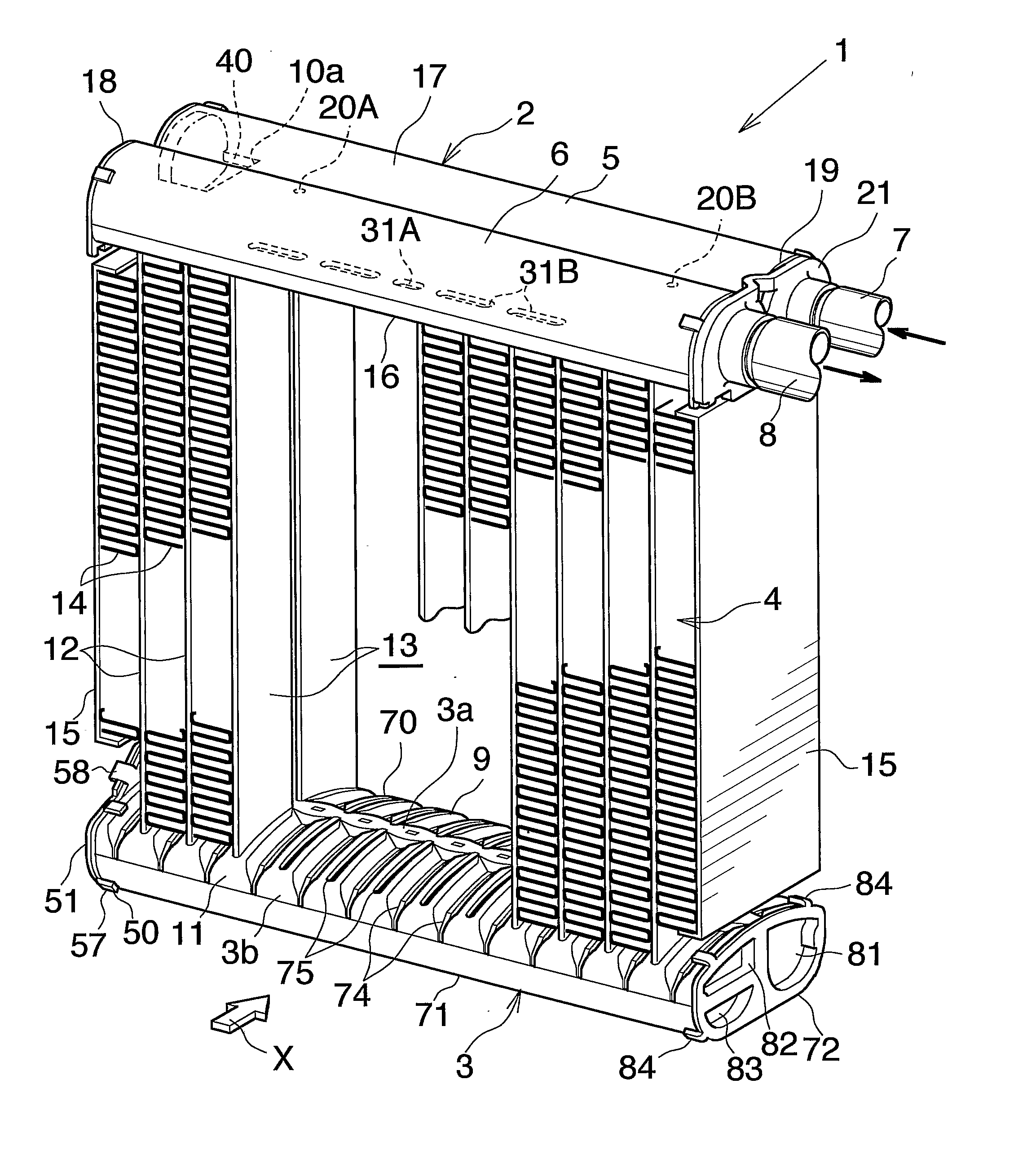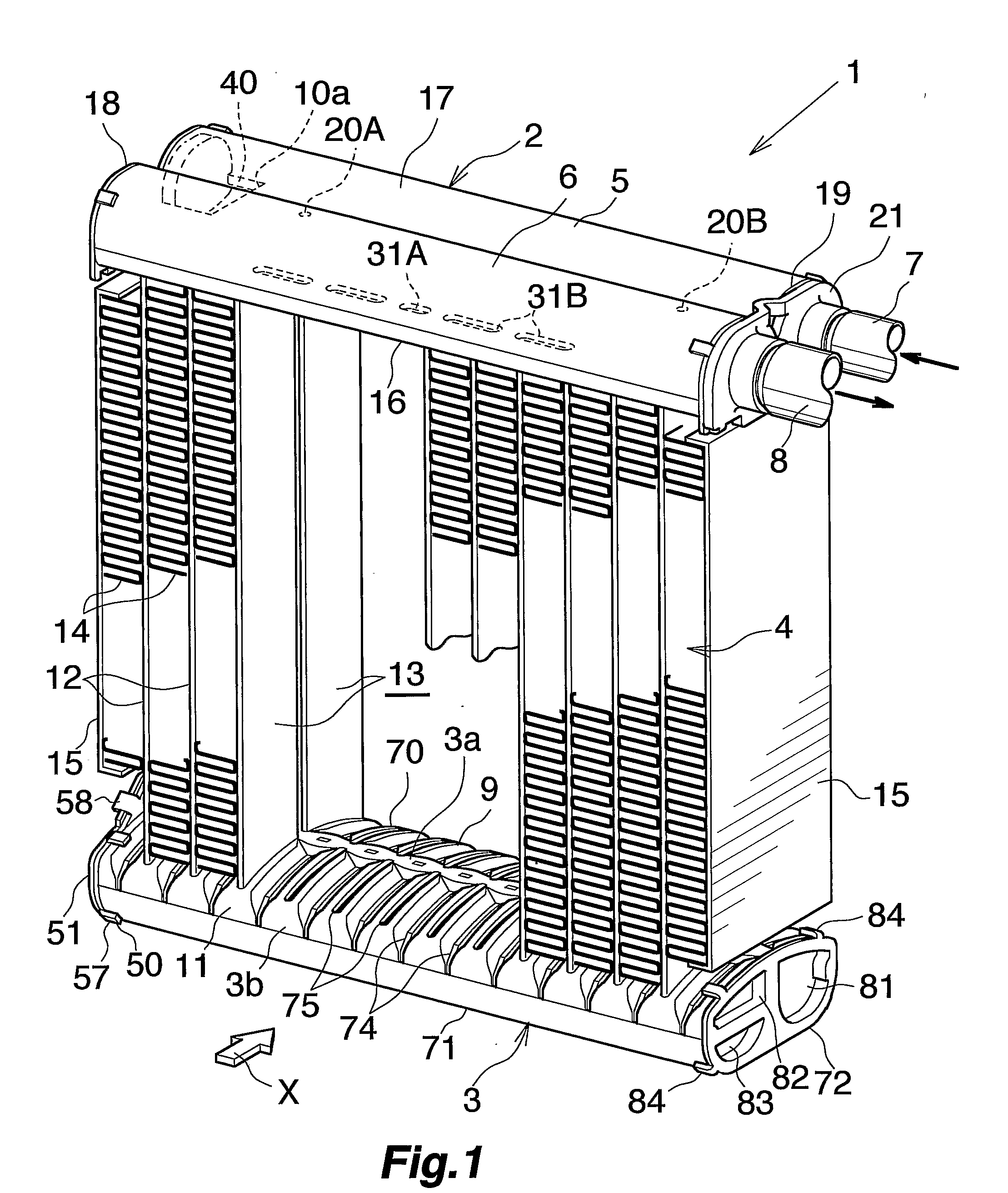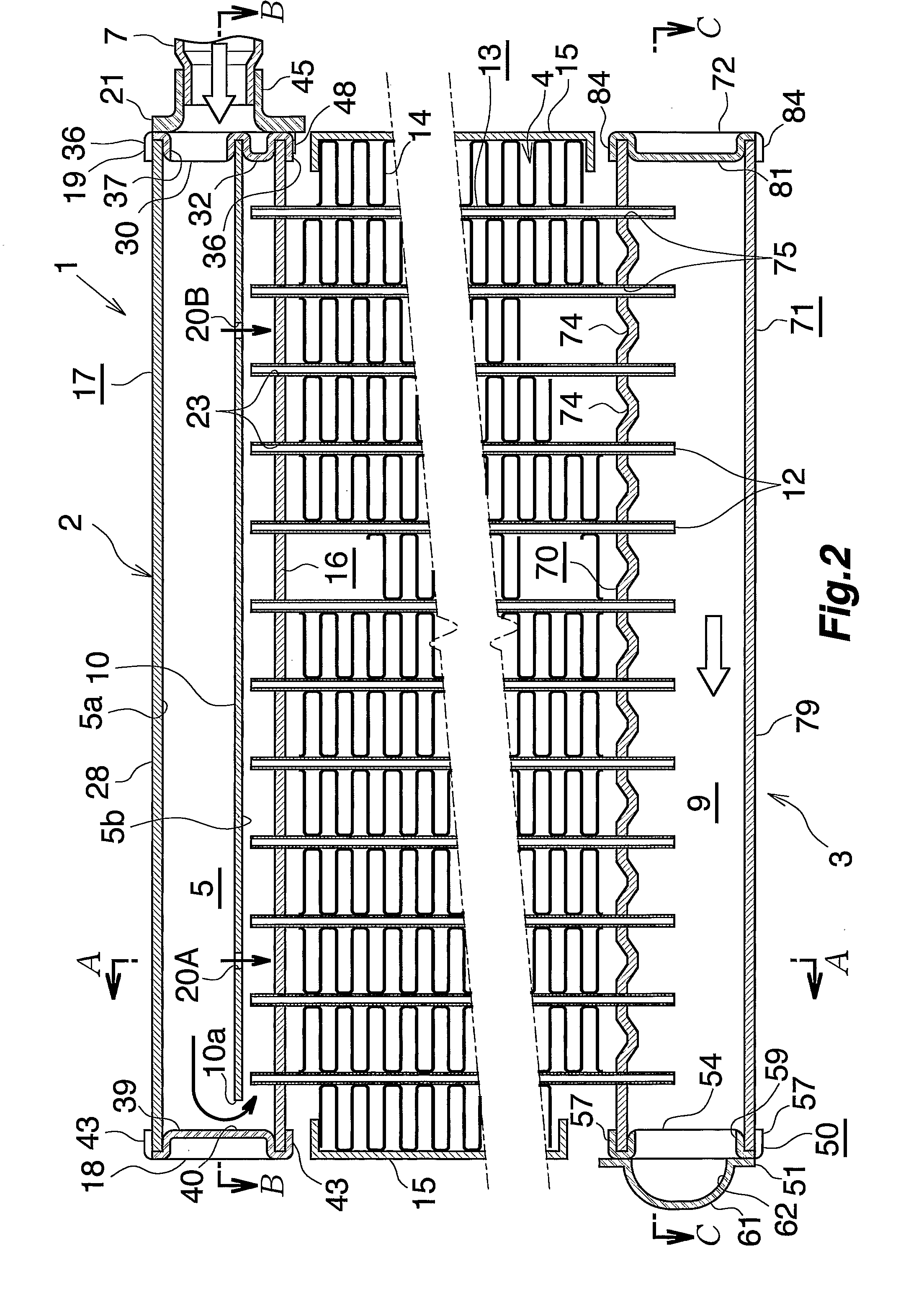Heat Exchanger
a technology of heat exchanger and heat exchange tube, which is applied in the direction of indirect heat exchanger, lighting and heating apparatus, transportation and packaging, etc., can solve the problems of increasing the overall internal volume of the inlet header, the difficulty of further improving the performance of the evaporator, and the inability to heat exchange the tube. the effect of simple work
- Summary
- Abstract
- Description
- Claims
- Application Information
AI Technical Summary
Benefits of technology
Problems solved by technology
Method used
Image
Examples
Embodiment Construction
[0046] An embodiment of the present invention will be described below with reference to the drawings. This embodiment is a heat exchanger of the invention as adapted for use as an evaporator in motor vehicle air conditioners wherein a chlorofluorocarbon refrigerant is used.
[0047] In the following description, the upper and lower sides and left-hand and right-hand sides of FIGS. 1 and 2 will be referred to as “upper,”“lower,”“left” and “right,” respectively.
[0048] FIGS. 1 to 3 show the overall construction of an evaporator, FIGS. 4 to 8 show the constructions of main parts, and FIG. 9 shows how a refrigerant flows through the evaporator.
[0049] FIGS. 1 to 3 show an evaporator 1, which comprises a refrigerant inlet-outlet header tank 2 of aluminum and a refrigerant turn header tank 3 of aluminum which are arranged one above the other as spaced apart, and a heat exchange core 4 provided between the two tanks 2, 3.
[0050] The refrigerant inlet-outlet header tank 2 comprises a refriger...
PUM
 Login to View More
Login to View More Abstract
Description
Claims
Application Information
 Login to View More
Login to View More - R&D
- Intellectual Property
- Life Sciences
- Materials
- Tech Scout
- Unparalleled Data Quality
- Higher Quality Content
- 60% Fewer Hallucinations
Browse by: Latest US Patents, China's latest patents, Technical Efficacy Thesaurus, Application Domain, Technology Topic, Popular Technical Reports.
© 2025 PatSnap. All rights reserved.Legal|Privacy policy|Modern Slavery Act Transparency Statement|Sitemap|About US| Contact US: help@patsnap.com



